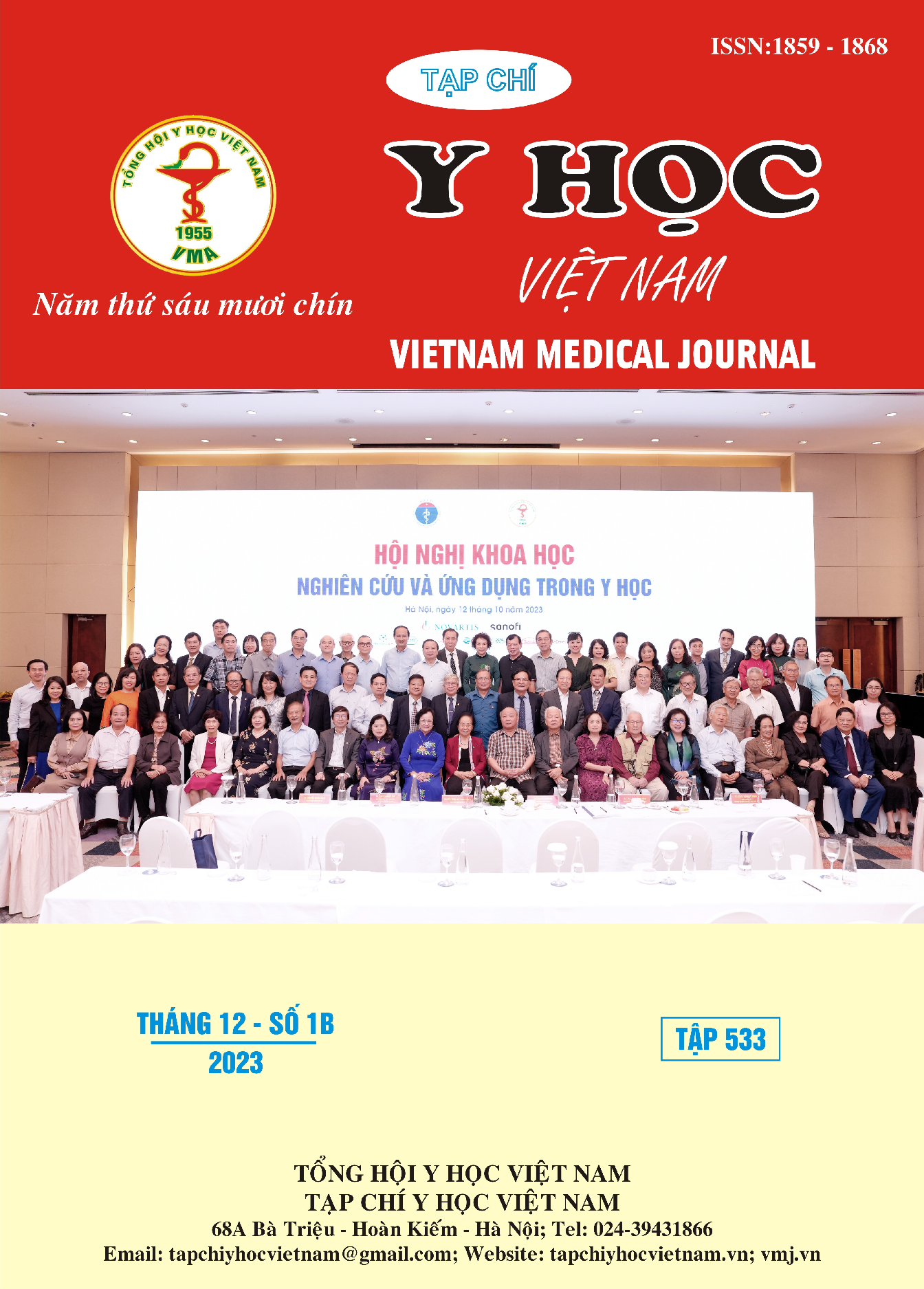ĐẶC ĐIỂM LÂM SÀNG, CẬN LÂM SÀNG VÀ PHƯƠNG PHÁP ĐIỀU TRỊ BỆNH NHÂN SARCOMA TỬ CUNG TẠI BỆNH VIỆN PHỤ SẢN TRUNG ƯƠNG
Nội dung chính của bài viết
Tóm tắt
Mục tiêu: Mô tả đặc điểm lâm sàng, cận lâm sàng và phương pháp điều trị của bệnh nhân sarcoma tử cung tại Bệnh viện Phụ sản Trung Ương. Phương pháp nghiên cứu: Nghiên cứu mô tả cắt ngang hồi cứu trên 35 bệnh nhân sarcoma tử cung tại Bệnh viện Phụ sản Trung ương từ tháng 1/2019 đến tháng 12/2022. Kết quả: Tuổi trung bình là 51,3 ± 13,7 tuổi. Có 51,4% bệnh nhân đã mãn kinh. Triệu chứng cơ năng hay gặp nhất của sarcoma cơ trơn tử cung là đau bụng hạ vị (73,6%), của sarcoma mô đệm niêm mạc tử cung và sarcoma tuyến là ra máu sau mãn kinh (75%). Trên chẩn đoán hình ảnh, đa số có 1 u với đặc điểm tăng sinh mạch máu (58,8% bệnh nhân sarcoma cơ trơn tử cung và 85% bệnh nhân sarcoma mô đệm niêm mạc tử cung và sarcoma tuyến). Có 15/35 bệnh nhân được chẩn đoán chính xác sarcoma tử cung trước phẫu thuật (42,8%), chủ yếu nhờ nạo buồng tử cung sinh thiết. Thể giải phẫu bệnh hay gặp nhất là sarcoma cơ trơn tử cung (54,2%) và sarcoma mô đệm niêm mạc tử cung (42,8%). Phương pháp phẫu thuật lần đầu tiên chủ yếu là cắt tử cung hoàn toàn (77,3%). 68,6% bệnh nhân phẫu thuật cắt cả phần phụ hai bên. 11/35 bệnh nhân được vét hạch chậu chỉ 27,3% có kết quả di căn hạch. Kết luận: Sarcoma tử cung thường gặp trong độ tuổi mãn kinh và tiền mãn kinh. Sarcoma cơ trơn tử cung và sarcoma mô đệm niêm mạc tử cung là 2 thể giải phẫu bệnh hay gặp nhất và có những đặc điểm lâm sàng, cận lâm sàng riêng biệt. Bệnh chủ yếu được chẩn đoán sau phẫu thuật. Phẫu thuật cắt tử cung hoàn toàn là phương pháp điều trị được áp dụng chủ yếu.
Chi tiết bài viết
Tài liệu tham khảo
2. Nguyễn QT. Một số nhận xét về ung thư tử cung tại bệnh viện Phụ sản Trung ương năm 2007-2008.2008.
3. Giuntoli RL, Metzinger DS, DiMarco CS, et al. Retrospective review of 208 patients with leiomyosarcoma of the uterus: prognostic indicators, surgical management, and adjuvant therapy. Gynecol Oncol. 2003;89(3):460-469.
4. Tropé CG, Abeler VM, Kristensen GB. Diagnosis and treatment of sarcoma of the uterus. A review. Acta Oncol. 2012;51(6):694-705. doi:10.3109/0284186X.2012.689111
5. Phạm Văn Bình. Nhận xét một số đặc điểm lâm sàng, cận lâm sàng bệnh nhân sarcom tử cung tại bệnh viện K.Tháng 2020:157-164.
6. Vrzic-Petronijevic S, Likic-Ladjevic I, Petronijevic M, Argirovic R, Ladjevic N. Diagnosis and surgical therapy of uterine sarcoma. Acta Chir Iugosl. 2006;53(3):67-72.
7. Chen I, Firth B, Hopkins L, Bougie O, Xie R hua, Singh S. Clinical Characteristics Differentiating Uterine Sarcoma and Fibroids. JSLS. 2018;22(1):e2017.00066.
8. Naaman Y, Shveiky D, Ben-Shachar I, Shushan A, Mejia-Gomez J, Benshushan A. Uterine sarcoma: prognostic factors and treatment evaluation. Isr Med Assoc J IMAJ. 2011;13(2):76-79.
9. Terek MC, Akman L, Hursitoglu BS, et al. The retrospective analysis of patients with uterine sarcomas: A single-center experience. J Cancer Res Ther. 2016;12(1):309-313.


